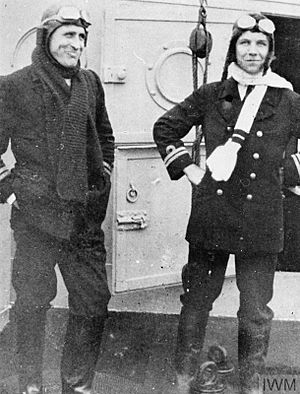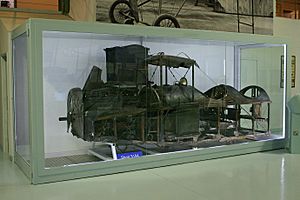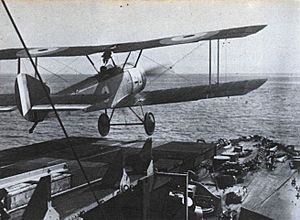Frederick Rutland facts for kids
Quick facts for kids
Frederick Joseph Rutland
|
|
|---|---|

Rutland (left) with Lieutenant Gerald Livock on HMS Engadine, 1916
|
|
| Born | 21 October 1886 Weymouth, England, United Kingdom |
| Died | 28 January 1949 (aged 62) Beddgelert, Wales, United Kingdom |
| Buried |
United Kingdom
|
| Allegiance | United Kingdom |
| Service/ |
Royal Naval Air Service Royal Air Force |
| Years of service | 1901–1923 |
| Rank | Squadron Leader |
| Battles/wars | First World War |
| Awards | Distinguished Service Cross & Bar Albert Medal |
Frederick Joseph Rutland (born October 21, 1886 – died January 28, 1949) was a British hero in early naval aviation. He was a skilled pilot during the First World War. He became known as "Rutland of Jutland" because of his brave actions at the Battle of Jutland in 1916. After the war, he worked for the Japanese. Later, during the Second World War, the British government held him in custody.
Rutland of Jutland
Frederick Rutland joined the Royal Navy in 1901 when he was a young boy. He became a pilot in the Royal Naval Air Service (RNAS) in December 1914. He earned his pilot's license in January 1915 and was promoted to Lieutenant in January 1916.

During the Battle of Jutland in May 1916, Rutland was a pilot on a ship called HMS Engadine. This ship carried seaplanes. On May 30, 1916, Engadine was with other ships trying to find the German fleet. Rutland took off in his Short Type 184 seaplane. His observer, George Stanley Trewin, helped him.
At 3:30 PM, they spotted three German cruisers and five destroyers. This was a very important moment. It was the first time an aircraft had ever scouted an enemy fleet during a battle. After sending a few more reports, Rutland's plane had a fuel problem. He had to land on the water. He fixed the plane and was ready to fly again. But he was told to taxi back to the ship. His plane was lifted back onto Engadine.
Rutland was given the Distinguished Service Cross (DSC). This award was for his bravery in flying close to the enemy ships. He received another DSC award in 1917 for finding submarines.
During the Battle of Jutland, a British ship called HMS Warrior was badly damaged. Engadine tried to help by towing it. The next morning, Warrior was sinking. Its crew had to leave the ship. Engadine came alongside to rescue them. About 675 sailors climbed onto the smaller Engadine. Some of them were badly hurt. One injured man fell into the water between the ships. Rutland bravely jumped into the sea to save him. For this heroic act, he received the Albert Medal in Gold.
Rutland's Short Type 184 plane was given to the Imperial War Museum in 1917. It was damaged during a German air raid in 1940. Today, part of the plane is on display at the Fleet Air Arm Museum.
In June 1917, Rutland made history again. He took off in a Sopwith Pup plane from a platform on top of a gun turret. This was on the ship HMS Yarmouth. It was the first successful take-off like this from a moving ship. He did more tests on the ship HMS Repulse. He successfully took off from its turrets in October 1917.
Rutland joined the Royal Air Force when it was created in April 1918. He was put in charge of the RAF unit on HMS Eagle in September 1921. He left the military in 1923.
Later Life
After leaving the Royal Air Force, Frederick Rutland moved to Japan. He helped the Imperial Japanese Navy learn about naval aviation. This included how to use aircraft carriers. In 1928, he came back to the UK.
Later, the Japanese Navy asked him to work for them as an agent in Los Angeles. Rutland set up a business there and another in Hawaii. He provided technical details that helped Japan design aircraft carriers.
During the Second World War, Rutland returned to Britain in October 1941. In December 1941, he was held by the British authorities. This was under a special wartime rule called Defence Regulation 18B. This rule allowed people to be jailed without a trial if they were thought to be a threat. Some of his old navy friends asked for his release. They said there was no proof he did anything wrong in Britain.
Biography
A book about Frederick Rutland's life, called Beverly Hills Spy, was published in February 2024. It was written by Ronald Drabkin.
See also
- Itaru Tachibana
- William Forbes-Sempill, 19th Lord Sempill
- Takeo Yoshikawa
Images for kids
-
Remnants of Rutland's Short Type 184 at the Fleet Air Arm Museum. While it survived the First World War intact, it was damaged by bombing during the Second World War.





